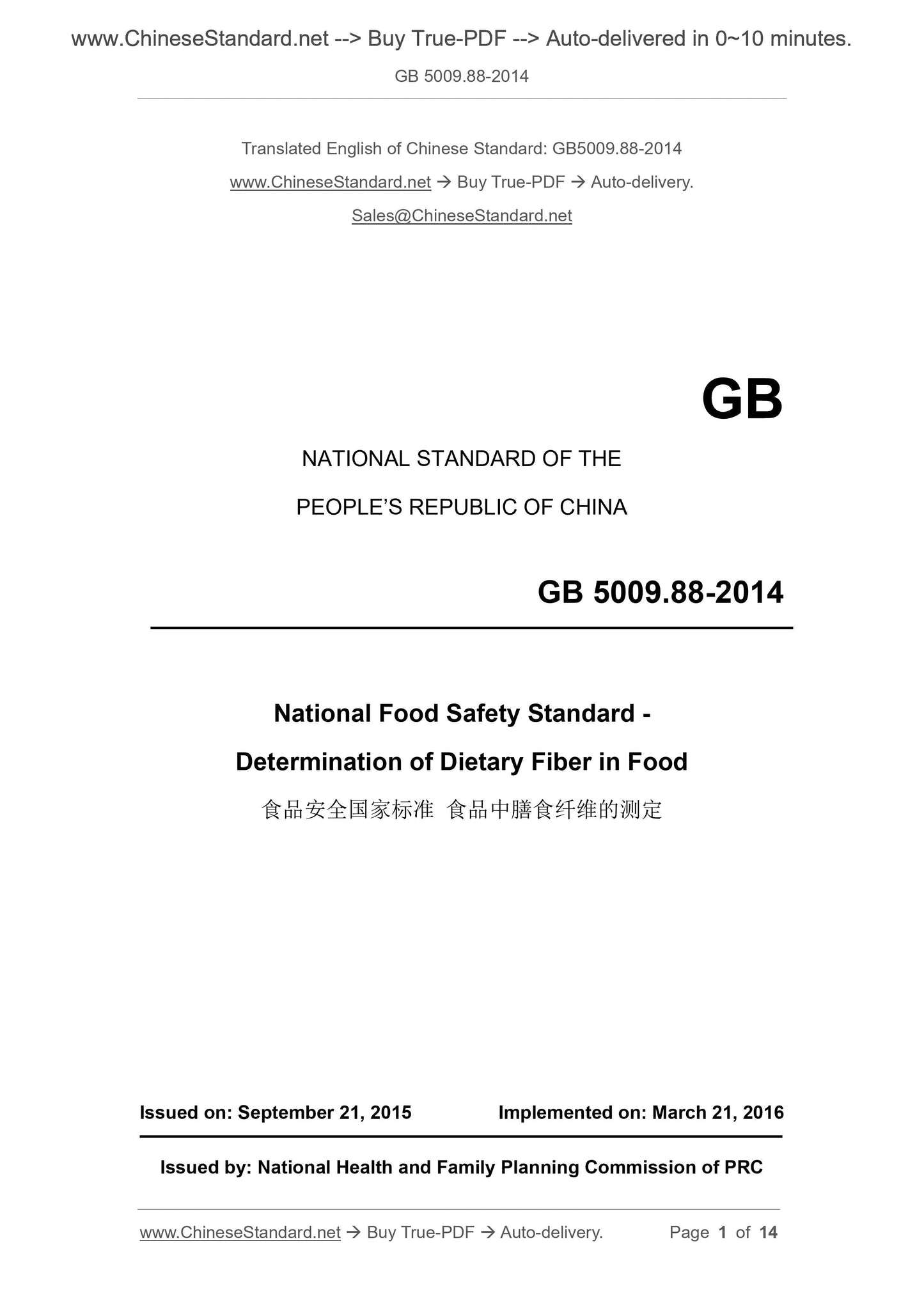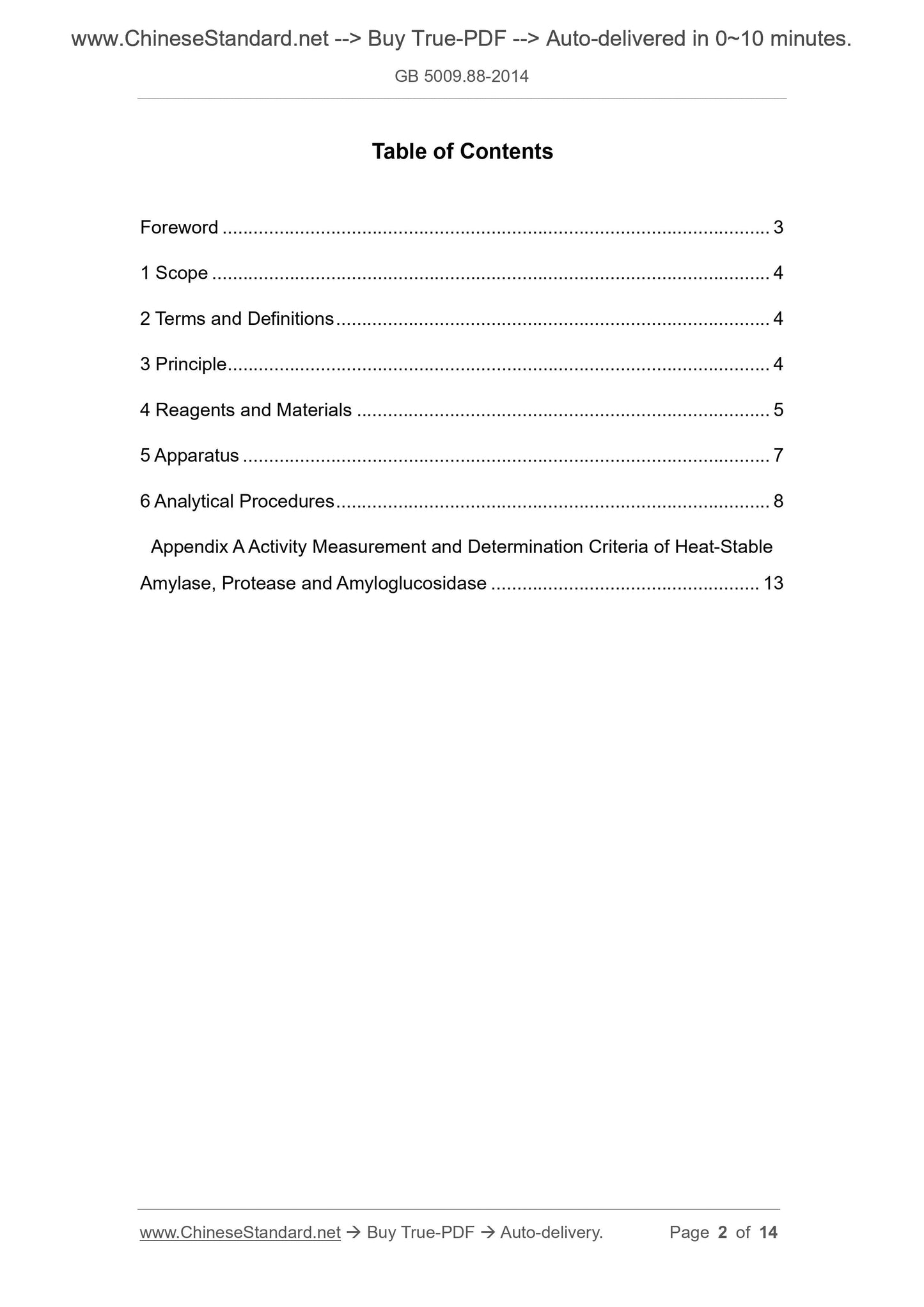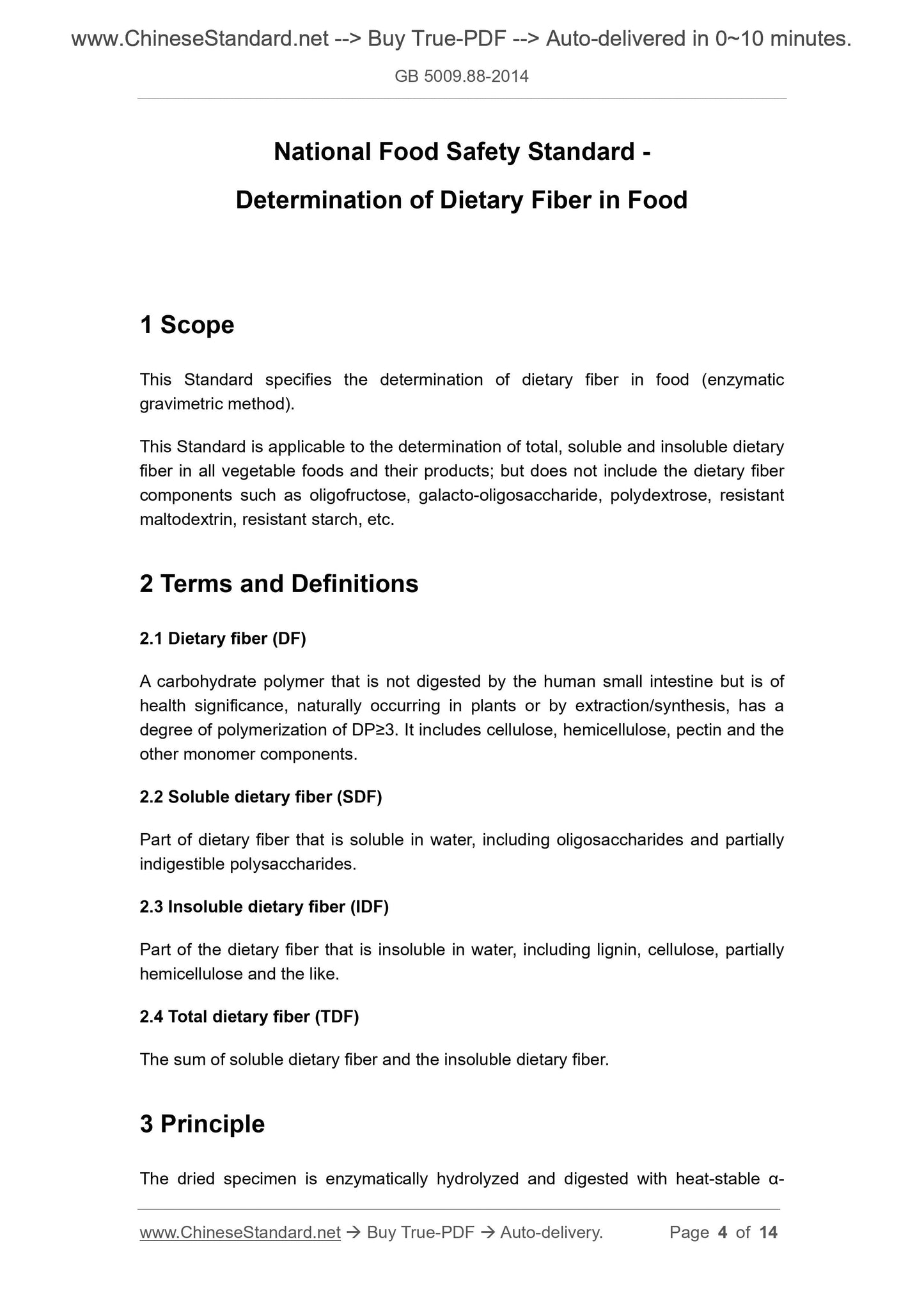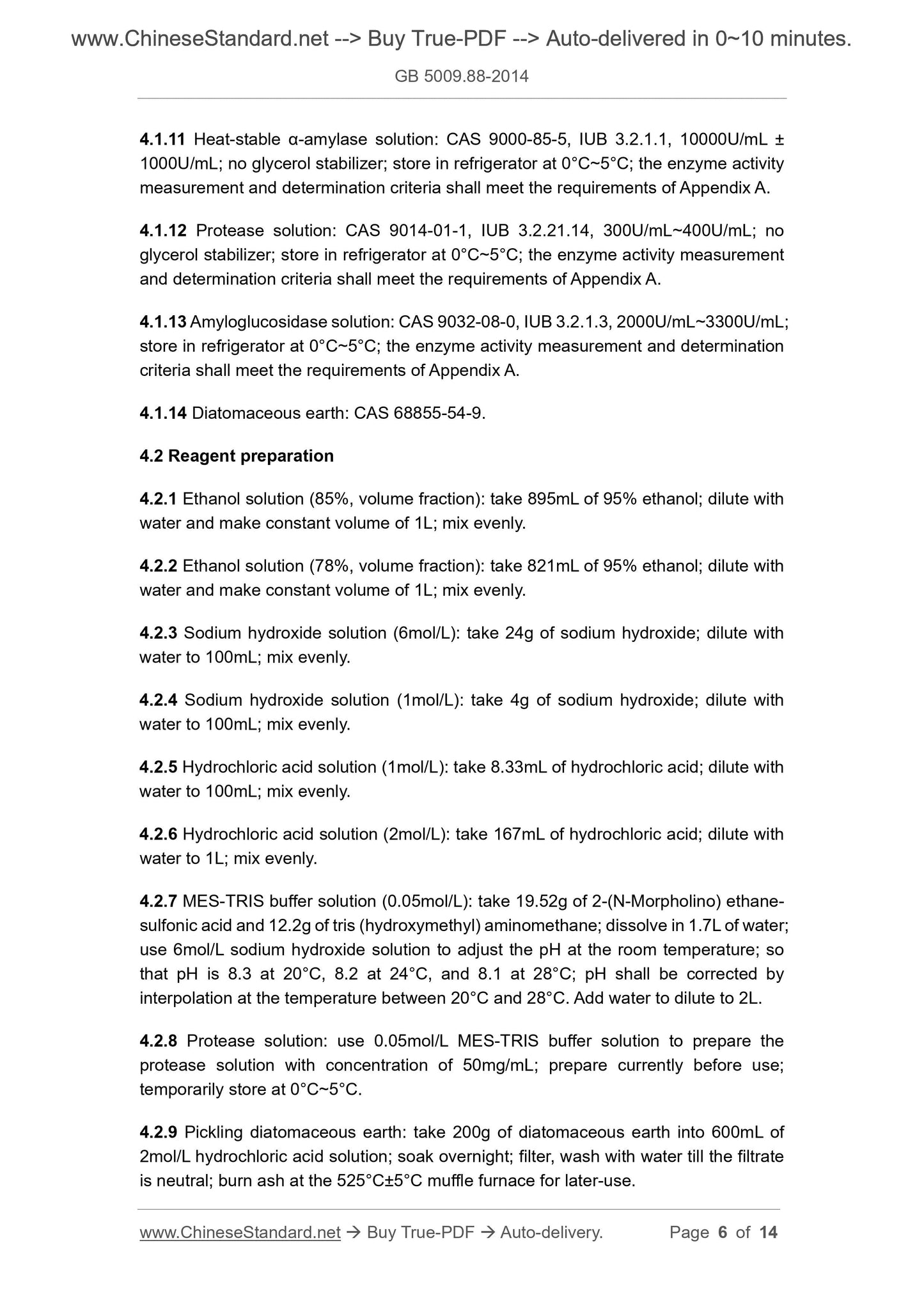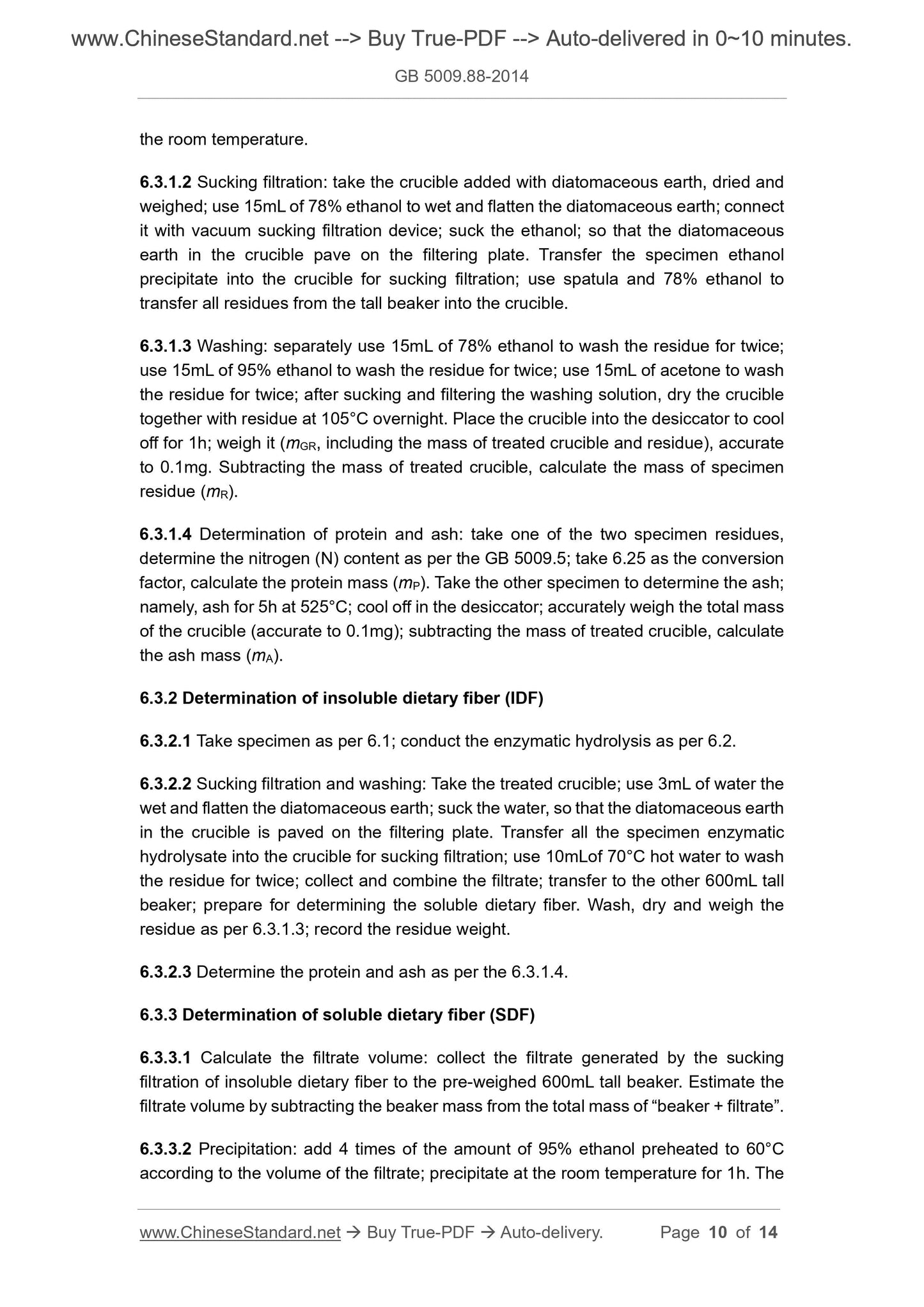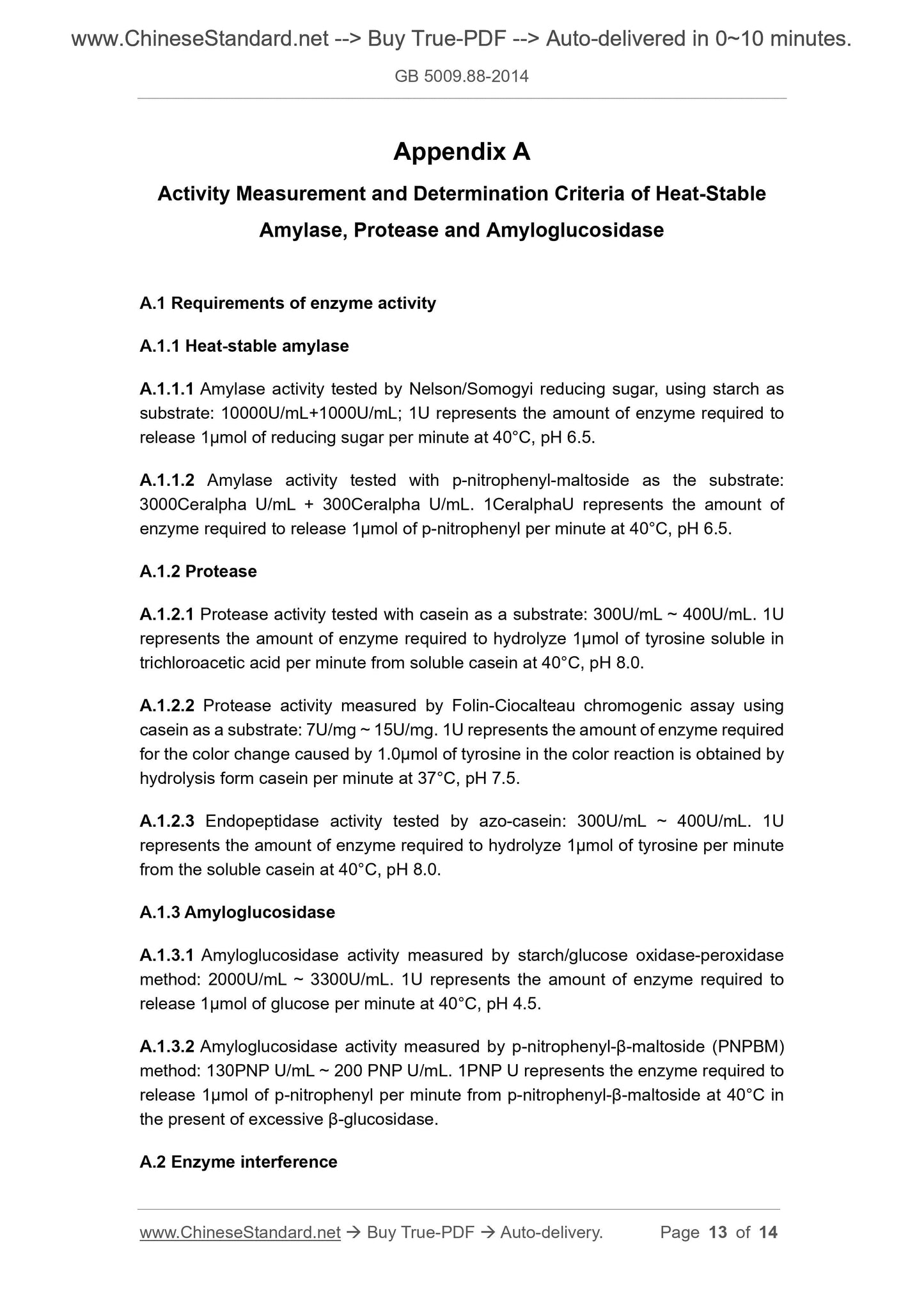1
/
of
7
PayPal, credit cards. Download editable-PDF & invoice in 1 second!
GB 5009.88-2014 English PDF
GB 5009.88-2014 English PDF
Regular price
$85.00
Regular price
Sale price
$85.00
Unit price
/
per
Shipping calculated at checkout.
Couldn't load pickup availability
GB 5009.88-2014: National Food Safety Standard -- Determination of dietary fiber in food
Delivery: 9 seconds. Download (and Email) true-PDF + Invoice.Get Quotation: Click GB 5009.88-2014 (Self-service in 1-minute)
Newer / historical versions: GB 5009.88-2014
Preview True-PDF
Scope
This Standard specifies the determination of dietary fiber in food (enzymaticgravimetric method).
This Standard is applicable to the determination of total, soluble and insoluble dietary
fiber in all vegetable foods and their products; but does not include the dietary fiber
components such as oligofructose, galacto-oligosaccharide, polydextrose, resistant
maltodextrin, resistant starch, etc.
Basic Data
| Standard ID | GB 5009.88-2014 (GB5009.88-2014) |
| Description (Translated English) | National Food Safety Standard -- Determination of dietary fiber in food |
| Sector / Industry | National Standard |
| Classification of Chinese Standard | C53 |
| Word Count Estimation | 9,998 |
| Date of Issue | 9/21/2015 |
| Date of Implementation | 3/21/2016 |
| Older Standard (superseded by this standard) | GB/T 5009.88-2003 |
| Regulation (derived from) | National Food Safety Standard Announcement 2015 No.7 |
| Issuing agency(ies) | National Health and Family Planning Commission of the People's Republic of China |
Share
